-
EXECUTIVE SUMMARY
-
MARKET ATTRACTIVENESS ANALYSIS
- GLOBAL SIDING MARKET, BY MATERIAL
- GLOBAL SIDING MARKET, BY APPLICATION
-
MARKET INTRODUCTION
-
DEFINITION
-
SCOPE OF THE STUDY
-
MARKET STRUCTURE
-
RESEARCH METHODOLOGY
-
RESEARCH PROCESS
-
PRIMARY RESEARCH
-
SECONDARY RESEARCH
-
MARKET SIZE ESTIMATION
-
TOP-DOWN AND BOTTOM-UP APPROACH
-
FORECAST MODEL
-
LIST OF ASSUMPTIONS
-
MARKET DYNAMICS
-
INTRODUCTION
-
DRIVERS
- INCREASING DEMAND FOR HOUSEHOLD AND CONSTRUCTION
- GOVERNMENT REGULATIONS AND INCENTIVES
- DRIVERS IMPACT ANALYSIS
-
RESTRAINT
- HIGH COSTS OF INSTALLATION AND MAINTENANCE
- LACK OF AWARENESS ABOUT SIDING MATERIALS
- RESTRAINT IMPACT ANALYSIS
-
OPPORTUNITY
- TECHNOLOGICAL ADVANCEMENTS IN THE FIELD OF SIDING MARKET
- INCREASING DEMAND FOR SUSTAINABLE MATERIALS
-
COVID-19 IMPACT ANALYSIS
- ECONOMIC IMPACT
- IMPACT ON PRODUCTION
- IMPACT ON SIDING MARKET
- IMPACT ON WORLD TRADE
-
MARKET FACTOR ANALYSIS
-
SUPPLY CHAIN ANALYSIS
- R&D
- RAW MATERIAL SUPPLY
- SERVICE PROVIDERS
- DISTRIBUTION & SALES CHANNELS
- END USE
-
PORTER''S FIVE FORCES MODEL
- THREAT OF NEW ENTRANTS
- BARGAINING POWER OF SUPPLIERS
- BARGAINING POWER OF BUYERS
- THREAT OF SUBSTITUTES
- INTENSITY OF RIVALRY
-
GLOBAL SIDING MARKET, BY MATERIAL
-
OVERVIEW
-
GLOBAL SIDING MARKET, BY APPLICATION
-
OVERVIEW
-
GLOBAL SIDING MARKET, BY REGION
-
OVERVIEW
- GLOBAL SIDING MARKET, BY REGION, 2018–2030
-
NORTH AMERICA
- NORTH AMERICA: SIDING MARKET, BY COUNTRY, 2018–2030
- US
- CANADA
- MEXICO
-
EUROPE
- EUROPE: SIDING MARKET, BY COUNTRY, 2018–2030
- GERMANY
- FRANCE
- UK
- ITALY
- SPAIN
- REST OF EUROPE
-
ASIA-PACIFIC
- ASIA-PACIFIC: SIDING MARKET, BY COUNTRY, 2018–2030
- CHINA
- INDIA
- JAPAN
- REST OF ASIA PACIFIC
-
MIDDLE EAST & AFRICA
- MIDDLE EAST & AFRICA: SIDING MARKET, BY COUNTRY, 2018–2030
- SOUTH AFRICA
- SUADI ARABIA
- UAE
- REST OF MIDDLE EAST & AFRICA
-
SOUTH AMERICA
- SOUTH AMERICA: SIDING MARKET, BY COUNTRY, 2018–2030
- BRAZIL
- ARGENTINA
- REST OF SOUTH AMERICA
-
COMPETITIVE LANDSCAPE
-
INTRODUCTION
-
COMPETITIVE BENCHMARKING
-
MARKET SHARE ANALYSIS
-
KEY DEVELOPMENTS & GROWTH STRATEGIES
- PRODUCT LAUNCH
- PARTNERSHIP
- ACQUISITION
- COLLABORATION
-
COMPANY PROFILES
-
SAINT-GOBAIN S.A.
- COMPANY OVERVIEW
- FINANCIAL OVERVIEW
- PRODUCTS OFFERED
- KEY DEVELOPMENTS
- SWOT ANALYSIS
- KEY STRATEGIES
-
WESTLAKE CORPORATION
- COMPANY OVERVIEW
- FINANCIAL OVERVIEW
- PRODUCTS OFFERED
- KEY DEVELOPMENTS
- SWOT ANALYSIS
- KEY STRATEGIES
-
BORAL
- COMPANY OVERVIEW
- FINANCIAL OVERVIEW
- PRODUCTS OFFERED
- KEY DEVELOPMENTS
- SWOT ANALYSIS
- KEY STRATEGIES
-
ETEX GROUP
- COMPANY OVERVIEW
- FINANCIAL OVERVIEW
- PRODUCTS OFFERED
- KEY DEVELOPMENTS
- SWOT ANALYSIS
- KEY STRATEGIES
-
KINGSPAN
- COMPANY OVERVIEW
- FINANCIAL OVERVIEW
- PRODUCTS OFFERED
- KEY DEVELOPMENTS
- SWOT ANALYSIS
- KEY STRATEGIES
-
GEORGIA-PACIFIC
- COMPANY OVERVIEW
- FINANCIAL OVERVIEW
- PRODUCTS OFFERED
- KEY DEVELOPMENTS
- SWOT ANALYSIS
- KEY STRATEGIES
-
JAMES HARDIE INDUSTRIES PLC
- COMPANY OVERVIEW
- FINANCIAL OVERVIEW
- PRODUCTS OFFERED
- KEY DEVELOPMENTS
- SWOT ANALYSIS
- KEY STRATEGIES
-
LOUISIANA-PACIFIC CORPORATION
- COMPANY OVERVIEWS
- FINANCIAL OVERVIEW
- PRODUCTS OFFERED
- KEY DEVELOPMENTS
- SWOT ANALYSIS
- KEY STRATEGIES
-
NICHIHA CO., LTD
- COMPANY OVERVIEW
- FINANCIAL OVERVIEW
- PRODUCTS OFFERED
- KEY DEVELOPMENTS
- SWOT ANALYSIS
- KEY STRATEGIES
-
CORNERSTONE BUILDING BRANDS
- COMPANY OVERVIEW
- FINANCIAL OVERVIEW
- PRODUCTS OFFERED
- KEY DEVELOPMENTS
- SWOT ANALYSIS
- KEY STRATEGIES
-
LIST OF TABLES
-
LIST OF ASSUMPTIONS
-
GLOBAL SIDING MARKET, BY MATERIAL 2018–2030 (USD MILLION)
-
GLOBAL SIDING MARKET, BY APPLICATION 2018–2030 (USD MILLION)
-
GLOBAL SIDING MARKET, BY REGION, 2018–2030 (USD MILLION)
-
NORTH AMERICA: SIDING MARKET, BY COUNTRY, 2018–2030 (USD MILLION)
-
NORTH AMERICA SIDING MARKET, BY MATERIAL, 2018–2030 (USD MILLION)
-
NORTH AMERICA SIDING MARKET, BY APPLICATION 2018–2030 (USD MILLION)
-
US SIDING MARKET, BY MATERIAL, 2018–2030 (USD MILLION)
-
US SIDING MARKET, BY APPLICATION 2018–2030 (USD MILLION)
-
US SIDING MARKET, BY COMMERCIAL 2018–2030 (USD MILLION)
-
CANADA SIDING MARKET, BY MATERIAL, 2018–2030 (USD MILLION)
-
CANADA SIDING MARKET, BY APPLICATION 2018–2030 (USD MILLION)
-
CANADA SIDING MARKET, BY COMMERCIAL 2018–2030 (USD MILLION)
-
MEXICO SIDING MARKET, BY MATERIAL, 2018–2030 (USD MILLION)
-
MEXICO SIDING MARKET, BY APPLICATION 2018–2030 (USD MILLION)
-
MEXICO SIDING MARKET, BY COMMERCIAL 2018–2030 (USD MILLION)
-
EUROPE: SIDING MARKET, BY COUNTRY, 2018–2030 (USD MILLION)
-
EUROPE SIDING MARKET, BY MATERIAL, 2018–2030 (USD MILLION)
-
EUROPE SIDING MARKET, BY APPLICATION 2018–2030 (USD MILLION)
-
EUROPE SIDING MARKET, BY COMMERCIAL 2018–2030 (USD MILLION)
-
GERMANY SIDING MARKET, BY MATERIAL, 2018–2030 (USD MILLION)
-
GERMANY SIDING MARKET, BY APPLICATION 2018–2030 (USD MILLION)
-
GERMANY SIDING MARKET, BY COMMERCIAL 2018–2030 (USD MILLION)
-
FRANCE SIDING MARKET, BY MATERIAL, 2018–2030 (USD MILLION)
-
FRANCE SIDING MARKET, BY APPLICATION 2018–2030 (USD MILLION)
-
FRANCE SIDING MARKET, BY COMMERCIAL 2018–2030 (USD MILLION)
-
UK SIDING MARKET, BY MATERIAL, 2018–2030 (USD MILLION)
-
UK SIDING MARKET, BY APPLICATION 2018–2030 (USD MILLION)
-
UK SIDING MARKET, BY COMMERCIAL 2018–2030 (USD MILLION)
-
ITALY SIDING MARKET, BY MATERIAL, 2018–2030 (USD MILLION)
-
ITALY SIDING MARKET, BY APPLICATION 2018–2030 (USD MILLION)
-
ITALY SIDING MARKET, BY COMMERCIAL 2018–2030 (USD MILLION)
-
SPAIN SIDING MARKET, BY MATERIAL, 2018–2030 (USD MILLION)
-
SPAIN SIDING MARKET, BY APPLICATION 2018–2030 (USD MILLION)
-
SPAIN SIDING MARKET, BY COMMERCIAL 2018–2030 (USD MILLION)
-
REST OF EUROPE SIDING MARKET, BY MATERIAL, 2018–2030 (USD MILLION)
-
REST OF EUROPE SIDING MARKET, BY APPLICATION 2018–2030 (USD MILLION)
-
REST OF EUROPE SIDING MARKET, BY COMMERCIAL 2018–2030 (USD MILLION)
-
ASIA-PACIFIC: SIDING MARKET, BY COUNTRY, 2018–2030 (USD MILLION)
-
ASIA-PACIFIC SIDING MARKET, BY MATERIAL, 2018–2030 (USD MILLION)
-
ASIA-PACIFIC SIDING MARKET, BY APPLICATION 2018–2030 (USD MILLION)
-
ASIA-PACIFIC SIDING MARKET, BY COMMERCIAL 2018–2030 (USD MILLION)
-
CHINA SIDING MARKET, BY MATERIAL, 2018–2030 (USD MILLION)
-
CHINA SIDING MARKET, BY APPLICATION 2018–2030 (USD MILLION)
-
CHINA SIDING MARKET, BY COMMERCIAL 2018–2030 (USD MILLION)
-
INDIA SIDING MARKET, BY MATERIAL, 2018–2030 (USD MILLION)
-
INDIA SIDING MARKET, BY APPLICATION 2018–2030 (USD MILLION)
-
INDIA SIDING MARKET, BY COMMERCIAL 2018–2030 (USD MILLION)
-
JAPAN SIDING MARKET, BY MATERIAL, 2018–2030 (USD MILLION)
-
JAPAN SIDING MARKET, BY APPLICATION 2018–2030 (USD MILLION)
-
JAPAN SIDING MARKET, BY COMMERCIAL 2018–2030 (USD MILLION)
-
REST OF ASIA-PACIFIC SIDING MARKET, BY MATERIAL, 2018–2030 (USD MILLION)
-
REST OF ASIA-PACIFIC SIDING MARKET, BY APPLICATION 2018–2030 (USD MILLION)
-
REST OF ASIA-PACIFIC SIDING MARKET, BY COMMERCIAL 2018–2030 (USD MILLION)
-
MIDDLE EAST & AFRICA: SIDING MARKET, BY COUNTRY, 2018–2030 (USD MILLION)
-
MIDDLE EAST & AFRICA SIDING MARKET, BY MATERIAL, 2018–2030 (USD MILLION)
-
MIDDLE EAST & AFRICA SIDING MARKET, BY APPLICATION 2018–2030 (USD MILLION)
-
MIDDLE EAST & AFRICA SIDING MARKET, BY COMMERCIAL 2018–2030 (USD MILLION)
-
SOUTH AFRICA SIDING MARKET, BY MATERIAL, 2018–2030 (USD MILLION)
-
SOUTH AFRICA SIDING MARKET, BY APPLICATION 2018–2030 (USD MILLION)
-
SOUTH AFRICA SIDING MARKET, BY COMMERCIAL 2018–2030 (USD MILLION)
-
SUADI ARABIA SIDING MARKET, BY MATERIAL, 2018–2030 (USD MILLION)
-
SUADI ARABIA SIDING MARKET, BY APPLICATION 2018–2030 (USD MILLION)
-
SAUDI ARABIA SIDING MARKET, BY COMMERCIAL 2018–2030 (USD MILLION)
-
UAE SIDING MARKET, BY MATERIAL, 2018–2030 (USD MILLION)
-
UAE SIDING MARKET, BY APPLICATION 2018–2030 (USD MILLION)
-
UAE SIDING MARKET, BY COMMERCIAL 2018–2030 (USD MILLION)
-
REST OF MIDDLE EAST & AFRICA SIDING MARKET, BY MATERIAL, 2018–2030 (USD MILLION)
-
REST OF MIDDLE EAST & AFRICA SIDING MARKET, BY APPLICATION 2018–2030 (USD MILLION)
-
REST OF MIDDLE EAST & AFRICA SIDING MARKET, BY COMMERCIAL 2018–2030 (USD MILLION)
-
SOUTH AMERICA: SIDING MARKET, BY COUNTRY, 2018–2030 (USD MILLION)
-
SOUTH AMERICA SIDING MARKET, BY MATERIAL, 2018–2030 (USD MILLION)
-
SOUTH AMERICA SIDING MARKET, BY APPLICATION 2018–2030 (USD MILLION)
-
SOUTH AMERICA SIDING MARKET, BY COMMERCIAL 2018–2030 (USD MILLION)
-
BRAZIL SIDING MARKET, BY MATERIAL, 2018–2030 (USD MILLION)
-
BRAZIL SIDING MARKET, BY APPLICATION 2018–2030 (USD MILLION)
-
BRAZIL SIDING MARKET, BY COMMERCIAL 2018–2030 (USD MILLION)
-
ARGENTINA SIDING MARKET, BY MATERIAL, 2018–2030 (USD MILLION)
-
ARGENTINA SIDING MARKET, BY APPLICATION 2018–2030 (USD MILLION)
-
ARGENTINA SIDING MARKET, BY COMMERCIAL 2018–2030 (USD MILLION)
-
REST OF SOUTH AMERICA SIDING MARKET, BY MATERIAL, 2018–2030 (USD MILLION)
-
REST OF SOUTH AMERICA SIDING MARKET, BY APPLICATION 2018–2030 (USD MILLION)
-
REST OF AMERICA SIDING MARKET, BY COMMERCIAL 2018–2030 (USD MILLION)
-
PRODUCT LAUNCH
-
PARTNERSHIP
-
ACQUISITION
-
COLLABORATION
-
SAINT-GOBAIN S.A.: PRODUCTS OFFERED
-
SAINT-GOBAIN S.A.:KEY DEVELOPMENTS
-
WESTLAKE CORPORATION: PRODUCTS OFFERED
-
WESTLAKE CORPORATION: KEY DEVELOPMENTS
-
BORAL: PRODUCTS OFFERED
-
ETEX GROUP: PRODUCTS OFFERED
-
KINGSPAN: PRODUCTS OFFERED
-
GEORGIA-PACIFIC: PRODUCTS OFFERED
-
JAMES HARDIE INDUSTRIES PLC: PRODUCTS OFFERED
-
JAMES HARDIE INDUSTRIES PLC: KEY DEVELOPMENTS
-
LOUISIANA-PACIFIC CORPORATION: PRODUCTS OFFERED
-
LOUISIANA-PACIFIC CORPORATION: KEY DEVELOPMENTS
-
NICHIHA CO., LTD: PRODUCTS OFFERED
-
CORNERSTONE BUILDING BRANDS: PRODUCTS OFFERED
-
-
LIST OF FIGURES
-
MARKET SYNOPSIS
-
GLOBAL SIDING MARKET ANALYSIS, BY MATERIAL
-
GLOBAL SIDING MARKET ANALYSIS, BY APPLICATION
-
GLOBAL SIDING MARKET: MARKET STRUCTURE
-
RESEARCH PROCESS OF MRFR
-
MARKET DYNAMICS: SIDING MARKET
-
DRIVERS: IMPACT ANALYSIS: SIDING MARKET
-
RESTRAINT IMPACT ANALYSIS: SIDING MARKET
-
SUPPLY CHAIN ANALYSIS: SIDING MARKET
-
PORTER''S FIVE FORCES ANALYSIS: SIDING MARKET
-
GLOBAL SIDING MARKET, BY MATERIAL, 2022 (% SHARE)
-
GLOBAL SIDING MARKET, BY MATERIAL, 2018–2030 (USD MILLION)
-
GLOBAL SIDING MARKET; MATERIAL SEGMENT ATTRACTIVENESS, (USD MILLION)
-
GLOBAL SIDING MARKET, BY APPLICATION, 2022 (% SHARE)
-
GLOBAL SIDING MARKET, BY APPLICATION, 2018–2030 (USD MILLION)
-
GLOBAL SIDING MARKET; APPLICATION SEGMENT ATTRACTIVENESS, (USD MILLION)
-
GLOBAL SIDING MARKET, BY REGION, 2022 (% SHARE)
-
GLOBAL SIDING MARKET, BY REGION, 2018-2027
-
NORTH

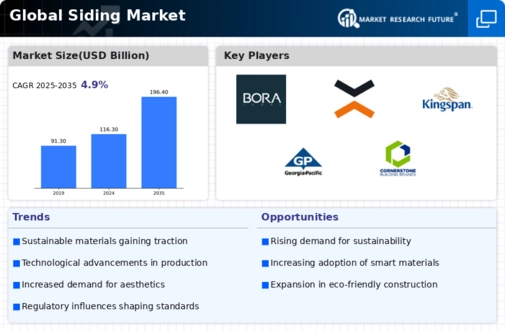
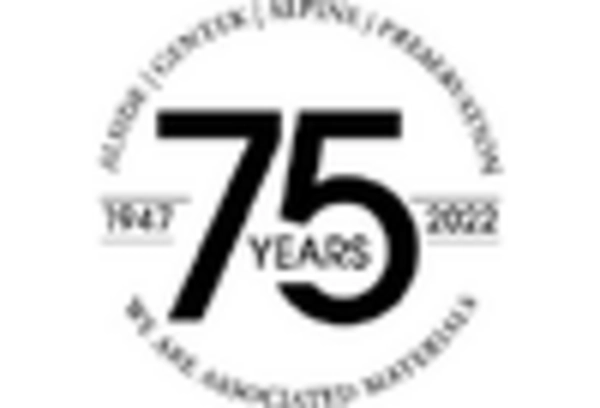
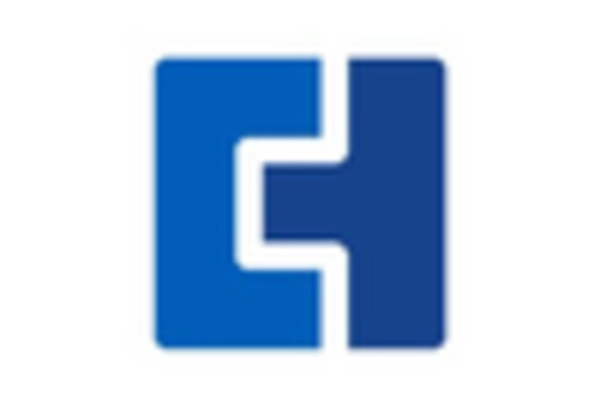
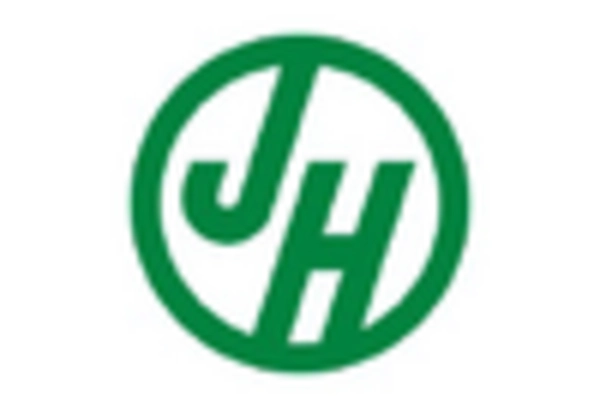
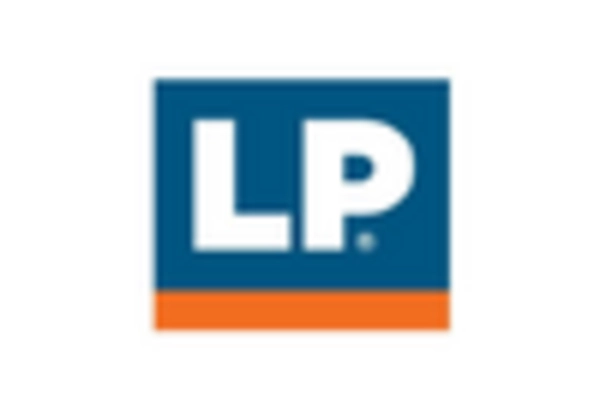
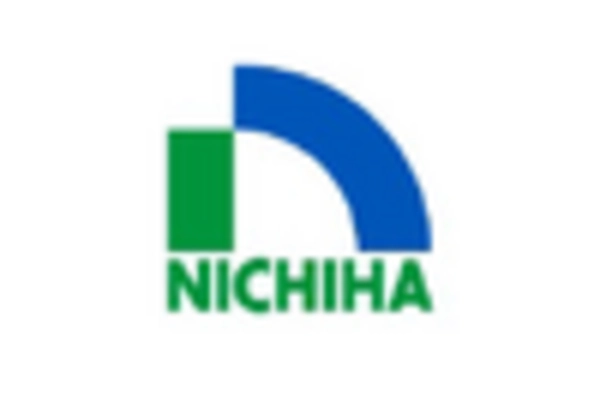
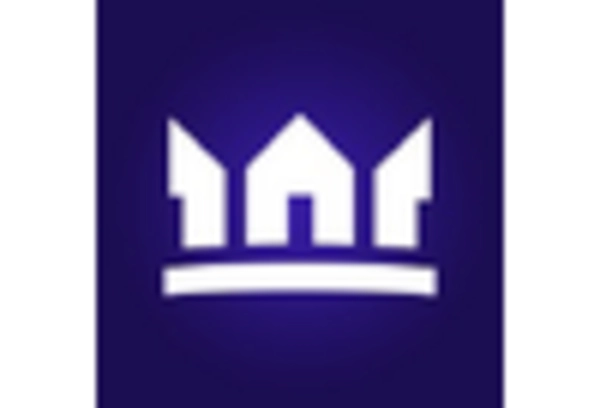

Leave a Comment